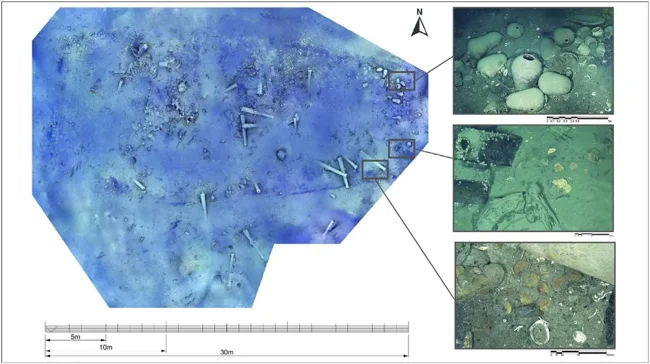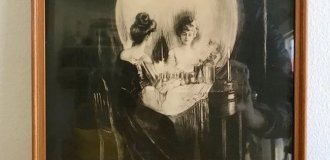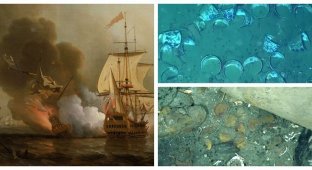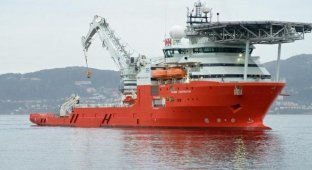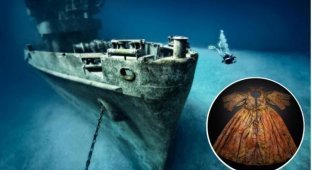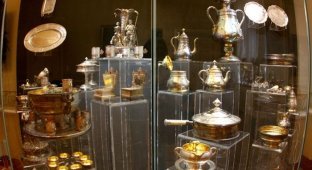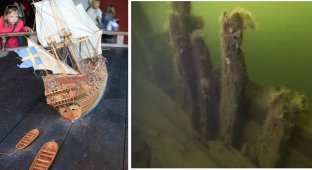Secrets of the depths: treasures of a ship that sank more than 300 years ago have been discovered (7 photos)
The treasure of the Spanish galleon San Jose, sunk by the British in 1708, has been found off the coast of Colombia. The ship was carrying billions of dollars' worth of gold, silver, gems and other valuables. 
The galleon San Jose explodes after being ambushed by a British warship during the Battle of Cartagena, Colombia, on June 8, 1708.
More than three centuries after a legendary Spanish treasure galleon sank off the coast of Colombia, researchers have revealed new details about gold coins found around the wreck.
Dubbed the "Holy Grail" of shipwrecks, the San Jose galleon was sunk by a British fleet off Cartagena in 1708, killing most of the roughly 600 crew members aboard. The ship was believed to be carrying billions of dollars' worth of gold, silver, gems, and other treasures. 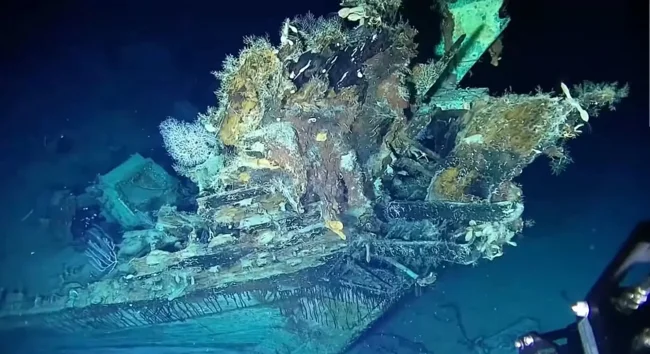
Researchers have now analyzed the intricately designed gold coins found near the sunken ship and confirmed that they do indeed belong to the legendary San Jose. 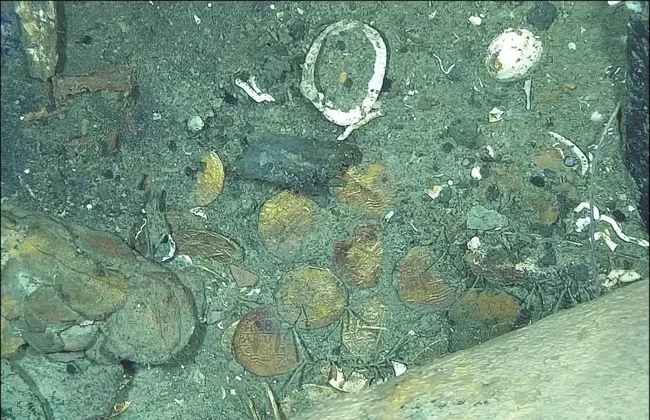
The coins feature castles, lions and crosses on the front and “crowned pillars of Hercules” over ocean waves on the back, according to a new study published in the journal Antiquity. 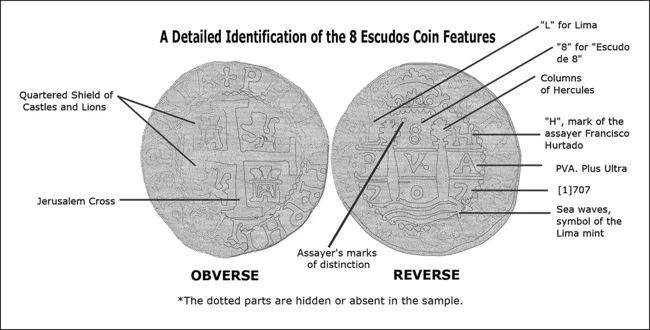
Researchers, including experts from the Colombian Navy, have examined images taken by remotely operated vehicles (ROVs) showing dozens of coins scattered around a shipwreck at a depth of nearly 2,000 feet (about 610 meters). The study’s authors said the exact number of coins on the seafloor was difficult to determine “due to the dynamic nature of the site.” But analysis of high-resolution images from the ROVs showed that each coin averaged 32.5 millimeters in diameter and weighed about 27 grams.
On some of the coins, the researchers were able to discern the letters PVA, a Latin motto meaning Plus Ultra, or “More and More.” According to the study's authors, the saying was used on the coins to represent the expansion of the Spanish monarchy in the Atlantic. Numerals indicating the coin's denomination and the date of minting (1707) could also be seen.
The scientists note that coins from this period were often cut from gold or silver bars.
Last August, Colombian authorities said a single remotely operated vehicle had surveyed the wreck, finding multiple artifacts including an anchor, jugs, and glass bottles. 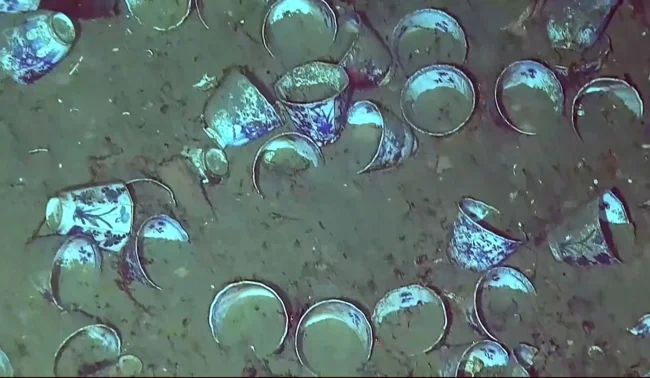
Last year, the Colombian government announced it would begin retrieving cargo from a ship off the country's Caribbean coast using multiple remotely operated vehicles. The ship was discovered in 2015, but its exact location was kept secret to protect the legendary vessel from potential treasure hunters.
Since its discovery, the ship has been claimed by many parties, including Colombia, Spain, and the indigenous Khara Khara people of Bolivia, who claim the treasure on board was stolen from them. The wreck is also claimed by the American salvage company Sea Search Armada, which claims to have first discovered the wreck more than 40 years ago. 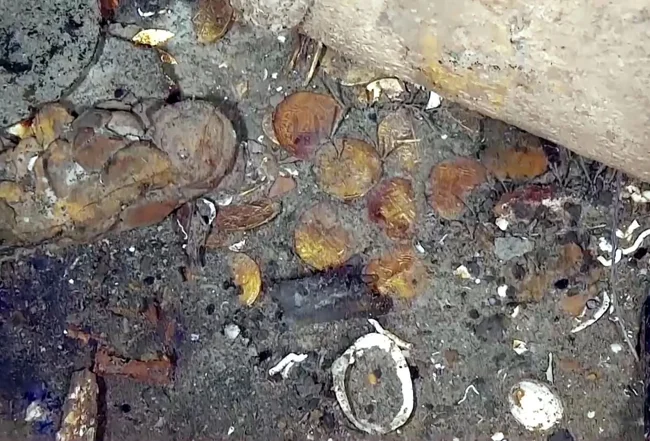
The cause of the San Jose's sinking is also controversial. British documents indicate that the ship did not explode, as the Colombian government claims, but Spanish accounts say that the vessel was blown up in combat.
Either way, the ship, loaded with chests of emeralds and some 200 tons of gold, sank with most of its crew while returning from the New World to Spain on June 7, 1708.
In May 2024, Colombia declared the wreck a "protected archaeological zone." 